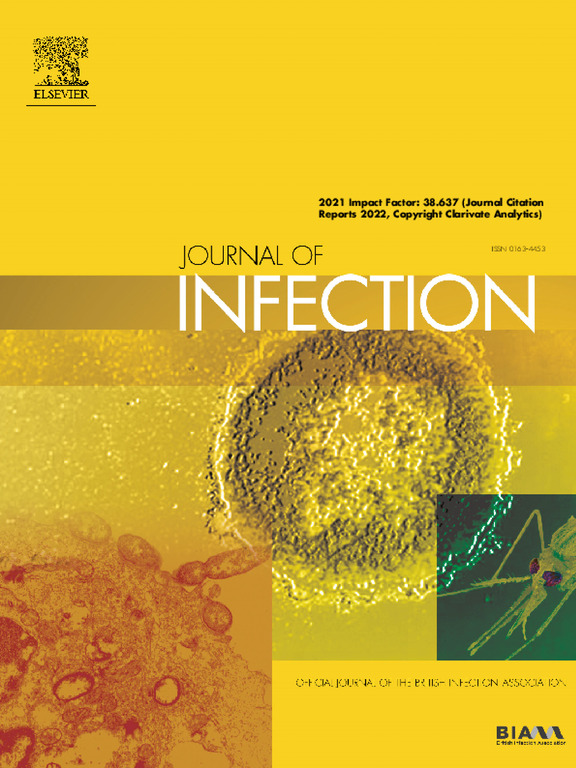The immunogenicity, reactogenicity, and safety of a bivalent mRNA or protein COVID-19 vaccine given as a fourth dose
IF 14.3
1区 医学
Q1 INFECTIOUS DISEASES
引用次数: 0
Abstract
Objectives
We conducted a randomised controlled trial (RCT) to compare immunogenicity, reactogenicity and safety one month after a fourth COVID-19 mRNA or protein vaccine dose.
Methods
This RCT recruited healthy adults in Melbourne, Australia, who had previously received three COVID-19 vaccine doses at least six months prior and had no SARS-CoV-2 infection in the last three months. The participants were randomised (1:1) to receive the bivalent mRNA vaccine (mRNA-1273.214/mRNA-1273.222, hereafter Moderna) or protein vaccine (NVX-CoV-2373, hereafter Novavax) as a fourth dose. A self-selected control group who elected not to receive an additional dose were also included. The co-primary endpoints compared immunogenicity at 28 days post-vaccination measured as binding antibodies (IgG against Ancestral and Omicron subvariants; BA.1, BA.4/5 and JN.1) between the two vaccine groups, and reactogenicity within one-week post-vaccination. ClinicalTrials.gov Identifier: NCT05543356.
Results
Between Feb 28 and Oct 4, 2023, 496 participants were enrolled into the study. Participants were randomised into either the bivalent mRNA Moderna (n=177) or protein Novavax (n=176) vaccine groups, with n=143 allocated to the control group. The geometric mean ratio (GMR) of anti-Spike binding IgG antibody levels were higher for the Moderna vaccine compared to the Novavax vaccine at 28 days post-vaccination for all variants tested, including Ancestral (GMR: 2.11, 95% CI: 1.88 – 2.37), BA.1 (GMR: 2.32, 95% CI 2.04 – 2.63), BA.4/5 (GMR: 2.32, 95% CI: 2.04 – 2.65), and JN.1 (GMR: 2.40, 95% CI: 2.14 – 2.70). The frequency of any local and systemic reactions (grades 1–4) was higher for the Moderna vaccine (159/177; 89.8%) compared to the Novavax vaccine (130/176; 73.9%). Serious reactions (grade 3–4) between the groups were similar (11/177; 6.2%, versus 9/176; 5.1%, respectively).
Conclusion
At day 28 post-vaccination, higher immunogenicity was observed following Moderna vaccination compared to Novavax vaccination when given as a fourth dose in healthy adults for Ancestral and Omicron subvariants, including JN.1. However, local and systemic reactogenicity was higher in the Moderna vaccine group compared with the Novavax vaccine group. These results may have important implications for ongoing booster strategies.
第四次接种二价mRNA或蛋白COVID-19疫苗的免疫原性、反应原性和安全性
目的:我们进行了一项随机对照试验(RCT),比较第四剂COVID-19 mRNA或蛋白疫苗接种后一个月的免疫原性、反应原性和安全性。方法:该随机对照试验招募了澳大利亚墨尔本的健康成年人,他们至少在6个月前接种过3剂COVID-19疫苗,并且在最近3个月内没有SARS-CoV-2感染。参与者随机(1:1)接受二价mRNA疫苗(mRNA-1273.214/mRNA-1273.222,以下简称Moderna)或蛋白疫苗(NVX-CoV-2373,以下简称Novavax)作为第四剂。一个选择不接受额外剂量的自我选择的对照组也包括在内。共同主要终点比较了疫苗接种后28天的免疫原性,以结合抗体(针对祖传和奥米克隆亚变体的IgG;BA.1、BA.4/5和JN.1),接种后1周内的反应原性。临床试验:gov标识符:NCT05543356。结果:在2023年2月28日至10月4日期间,496名参与者参加了这项研究。参与者被随机分配到二价mRNA Moderna (n=177)或蛋白质Novavax (n=176)疫苗组,其中n=143分配到对照组。在接种后28天,Moderna疫苗的抗刺突结合IgG抗体水平的几何平均比(GMR)高于Novavax疫苗,包括祖代(GMR: 2.11, 95% CI: 1.88 - 2.37)、BA.1 (GMR: 2.32, 95% CI 2.04 - 2.63)、BA.4/5 (GMR: 2.32, 95% CI: 2.04 - 2.65)和JN.1 (GMR: 2.40, 95% CI: 2.14 - 2.70)。现代疫苗的任何局部和全身反应(1-4级)发生率更高(159/177;89.8%),而Novavax疫苗(130/176;73.9%)。两组间严重反应(3-4级)相似(11/177;6.2% vs 9/176;分别为5.1%)。结论:在疫苗接种后第28天,与诺瓦瓦克斯(Novavax)疫苗相比,在健康成人中作为祖代和欧米克隆亚变体(包括jn1)的第四剂接种Moderna疫苗后观察到更高的免疫原性。然而,与Novavax疫苗组相比,Moderna疫苗组的局部和全身反应原性更高。这些结果可能对正在进行的助推器策略具有重要意义。
本文章由计算机程序翻译,如有差异,请以英文原文为准。
求助全文
约1分钟内获得全文
求助全文
来源期刊

Journal of Infection
医学-传染病学
CiteScore
45.90
自引率
3.20%
发文量
475
审稿时长
16 days
期刊介绍:
The Journal of Infection publishes original papers on all aspects of infection - clinical, microbiological and epidemiological. The Journal seeks to bring together knowledge from all specialties involved in infection research and clinical practice, and present the best work in the ever-changing field of infection.
Each issue brings you Editorials that describe current or controversial topics of interest, high quality Reviews to keep you in touch with the latest developments in specific fields of interest, an Epidemiology section reporting studies in the hospital and the general community, and a lively correspondence section.
 求助内容:
求助内容: 应助结果提醒方式:
应助结果提醒方式:


